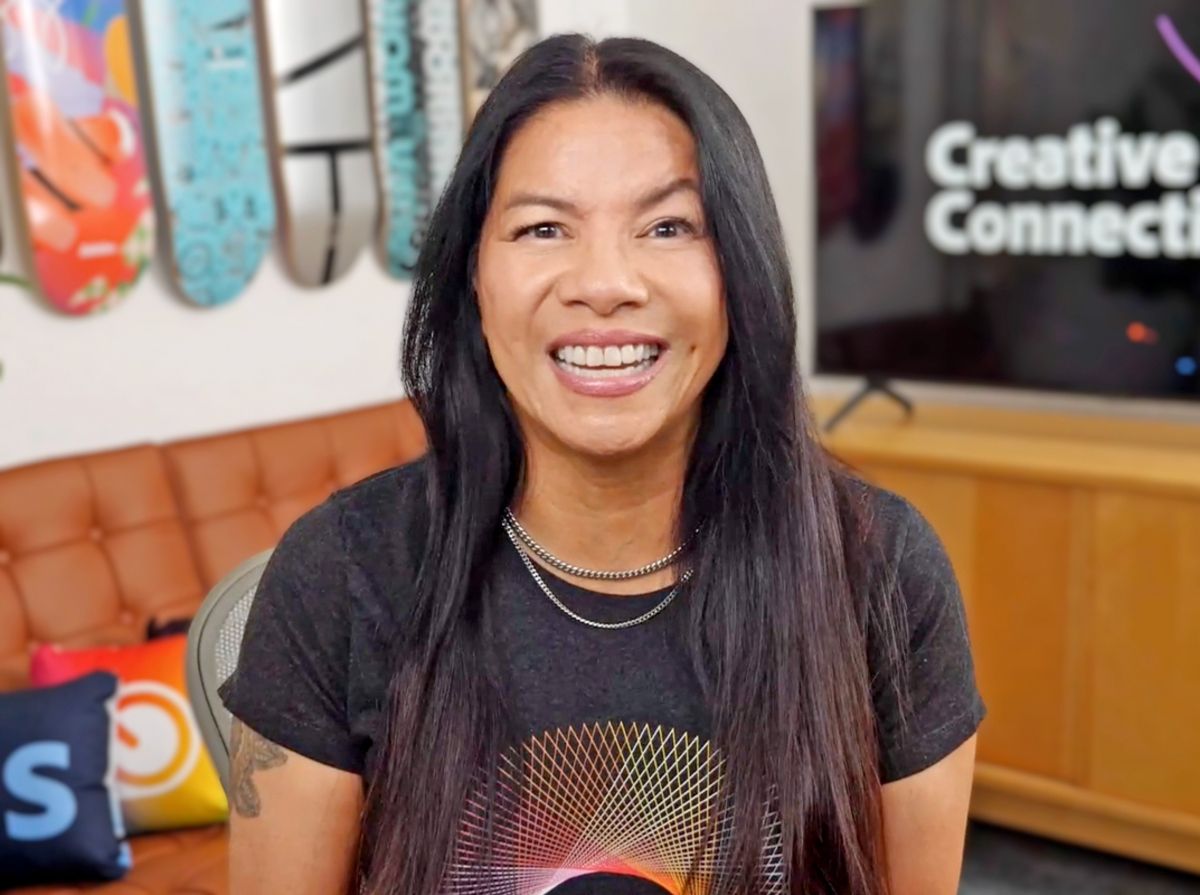Phoenix, sometime around 2011. A Design for Good breakout session. Laurel, there as a student with her Cal State Fullerton group, asks what everyone’s thinking: “How the heck do we pay for all this crap?”
James, already involved with AIGA Blue Ridge leadership, noticed the question. Later that night, he’s asking people, “Who is that girl?”
At some point during the conference, James tried to get Laurel to dance. She said no. They were talking typography.
Sometimes the best connections happen when you’re nerding out over the thing you actually care about.
The Long-Distance Design Romance
They talked off and on for nine months before James flew to California for Laurel’s birthday. What followed was a year of red-eyes every six weeks between California and West Virginia.
Eventually, Laurel moved to West Virginia. Six months later, she went to an AIGA Blue Ridge meeting where the chapter (down to under 20 members) was discussing dissolving.
She volunteered to be president.
Think about that. You move across the country, you’re looking for community, and instead of just showing up, you step up to lead something that’s actively failing. That takes courage.
What Those Retreats Actually Did
James’s first leadership retreat in Omaha was a before-and-after moment. During an icebreaker, he ended up with Debbie Millman, having no idea who she was. When asked about her least favorite words, Debbie said the f-bomb. James, who was about to declare it his favorite, thought: “This is gonna go well.”
Everything closed at 11 pm, so everyone stayed in the Embassy Suites’ rainforest-themed atrium until dawn. This is where James learned that people he thought were impossibly cool were just people. Which meant he could go do cool stuff too.
That’s the lesson Omaha taught him: permission. Permission to be ambitious, to try things, to be in rooms you think you don't belong in.
Laurel’s initiation came at Grand Rapids. Human pyramids formed on the grand staircases while the entire lobby cheered. A security guard eventually broke things up. The 6 AM club showed up in full force. Laurel made it to 4:30 before tapping out.
Room parties became legendary. Beer tastings, local beer exchanges, and somehow everyone ended up in Debbie Millman’s room at some point. Nobody remembers how or why.
These weren’t just parties. They were trust-building exercises disguised as chaos. When you’re forming human pyramids with people at 2 am, you’re creating bonds that last.
Small Chapters, Big Impact
AIGA Blue Ridge maxed out at maybe 150-200 members. Usually, 20-30 people showed up. The board was 6-8 people, which meant they’d be a third of any room.
So they designed what they wanted to see.
Flux started as a local student design competition, went national, then international. One year, they got over 3,000 entries.
Clockwork became a national initiative from this tiny chapter.
Mock Up paired student teams with nonprofits and professional mentors. Local news covered it.
They brought Kit Hinrichs to speak about flags, Ram Castillo for a book tour that made the front page of the local paper, and did bookbinding workshops because they wanted to.
Here’s what struck me: when your board is a third of the room, everyone has skin in the game. Everyone’s voice matters. That constraint—being small—became their superpower. They couldn’t coast on numbers, so they had to create things that actually mattered.
From Question to Career
That question Laurel asked about getting paid for doing good work, became their entire business model.
Today, Hersick + Webster Creative Partners does facilitation, strategy, and place-based branding. Currentl,y they’re working on a trail in Birmingham connecting redlined communities to civil rights monuments being considered for UNESCO World Heritage status.
James wouldn’t have imagined this work 10 years ago. But you can trace it back: that first retreat in Omaha, creating Clockwork, getting invited into Design for Good, making connections that led to Alabama and beyond.
This is where leadership experience actually pays off. All those sessions about values and facilitation weren’t just feel-good exercises. They were tools they'd use for the next decade.
Why This Story Matters
Both got emotional talking about the Design for Good movement that became Path to Impact. James got involved nationally, then Laurel stepped in as he rolled off, working with Justin Ahrens (who’d been on that original panel), Leticia Wolf, and Lenny Gray Morris to create the toolkit.
James summed it up: “My best friend, I met through that. My wife, I met through that.”
This is why we do this podcast. These stories demonstrate something crucial: the relationships you build, the skills you develop, the confidence you gain from leading a struggling chapter—those things compound over time in ways you can’t predict.
Get in the room. Ask the hard questions. Stay for the conversations that don’t stop. Build something with 20 people that impacts 3,000. Take over the dying chapter.
Leadership retreats where security guards break up human pyramids create the kinds of bonds that shape entire careers. Small chapters with passionate volunteers create ripple effects that last decades.
And sometimes, you meet someone who refuses to dance because typography is more interesting, and eventually becomes your partner in both life and business.
James kept coming back to one lesson: Be in the room. Not networking, not collecting business cards. Just being present, doing the work, asking honest questions, and seeing what happens.
Want to hear more stories like Laurel and James’s? Subscribe to Cheers & Tiers on Apple Podcasts, Spotify, or wherever you get your podcasts. We’ll have more episodes featuring your friends and your favorite design leaders, sharing their journeys, challenges, and triumphs.
Please subscribe, rate, and review Cheers & Tiers: Design Leadership Tales Retold wherever you get your podcasts.
Spotify Podcasts https://open.spotify.com/show/0jcH8ocd0DaATC3c3ArSkw
Pocket Casts https://pca.st/0m1hq9e8
